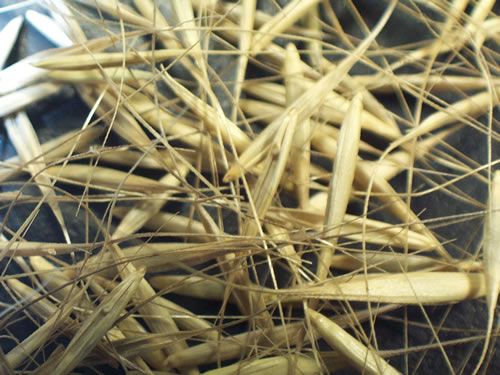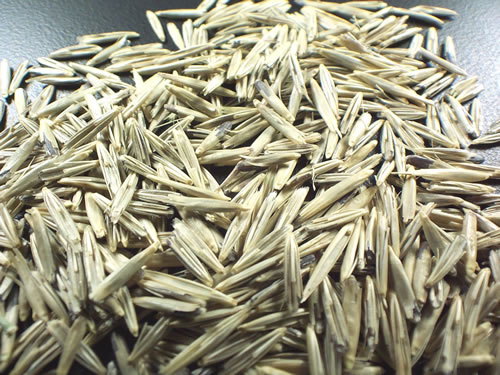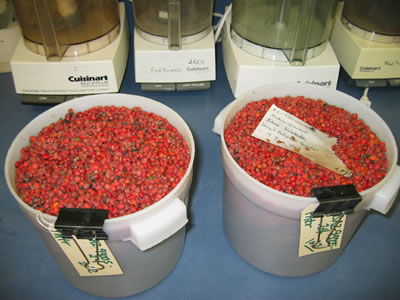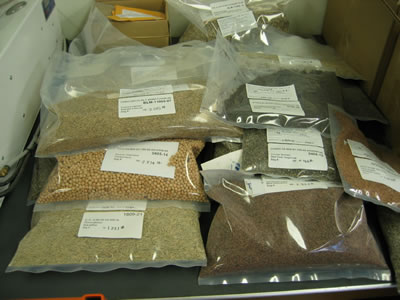Processing and Testing Native Seed
Prior to use or storage, wild collected seed must generally be hand-screened, stripped, or mechanically cleaned to remove impurities such as excess chaff, stems, leaves, trash, dirt, and seeds of non-target species. In recent years, Forest Service seed extractories have retooled and invested in specialty and small lot cleaning equipment to handle the broad array of native species that are collected by National Forests and other federal agencies and cooperators. To date, Forest Service extractories have processed over 500 different native species.



The seed of many native grass species have long awns that must be mechanically removed prior to establishment in seed production fields or use in restoration projects.
After cleaning, the quality and viability of the seed is tested using standards and rules approved by the Association of Official Seed Analysts (AOSA). Seed test results are of interest to both growers and users of the seed. Seed quality is tested by determining the percentage of pure seeds relative to the percentage of contaminants such as weed or other crop seeds and inert matter (e.g., stems, chaff, small stones). Seed viability can be evaluated by standard germination tests that determine the percentage of viable seeds in a sample that have potential to germinate and produce seedlings under favorable field conditions. The percentage of pure live seed (PLS), calculated as the percent purity multiplied by the percent germination, is commonly used as a standardized indicator of seed quality.
Many native species produce seeds that are dormant and will not germinate without after-ripening (time) or special germination enhancement treatments (stratification, scarification, gibberellic acid, etc.). In these cases, seed viability may be estimated using other procedures. Most widely used is the fast and inexpensive tetrazolium (TZ) test, which involves a biochemical staining technique with tetrazolium chloride that visibly stains live, germinable seed.
Seed test results should verify that the seed lot contains no “Prohibited” noxious weed seed, and that seed meets or exceed standards for “Restricted” or “Other Weed Seed” content. Because each state has different lists of prohibited and restricted noxious weeds, often seed lots are tested with an “All-States Noxious Weed Exam”. The name and number of seeds per pound of weed and other crop seed are listed on the seed label. Other contaminants of concern are aggressive nonnative species that, although not prohibited or restricted by the State, may still pose a threat to native plant communities.
After a long process, cleaned and tested seed is available for project use or may be stored for future use in warehouses or freezers.
Additional Resources and References
 Specialty equipment designed to remove impurities from high value wildland seed collections. Forest Service seed extractories process over 500 different native species, each with specific handling and cleaning requirements.
Specialty equipment designed to remove impurities from high value wildland seed collections. Forest Service seed extractories process over 500 different native species, each with specific handling and cleaning requirements.
 Skunkbush sumac berries ready for processing to separate the seeds from the pulp.
Skunkbush sumac berries ready for processing to separate the seeds from the pulp.
 Processed and packaged native seed ready for storage for future use.
Processed and packaged native seed ready for storage for future use.

